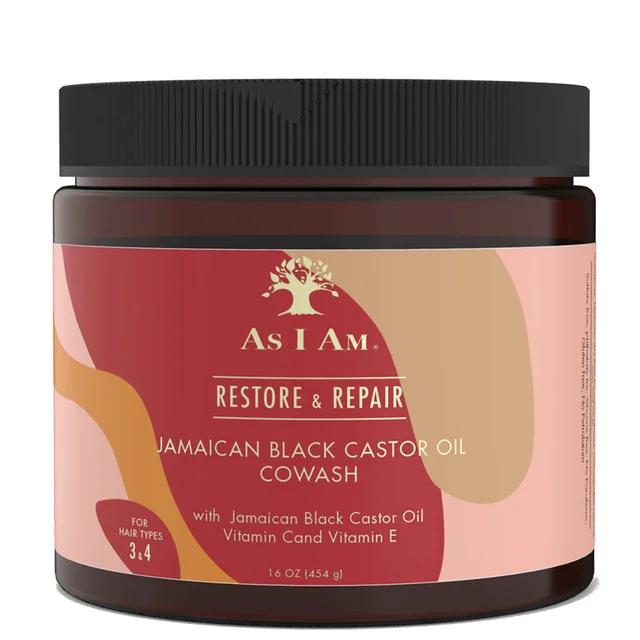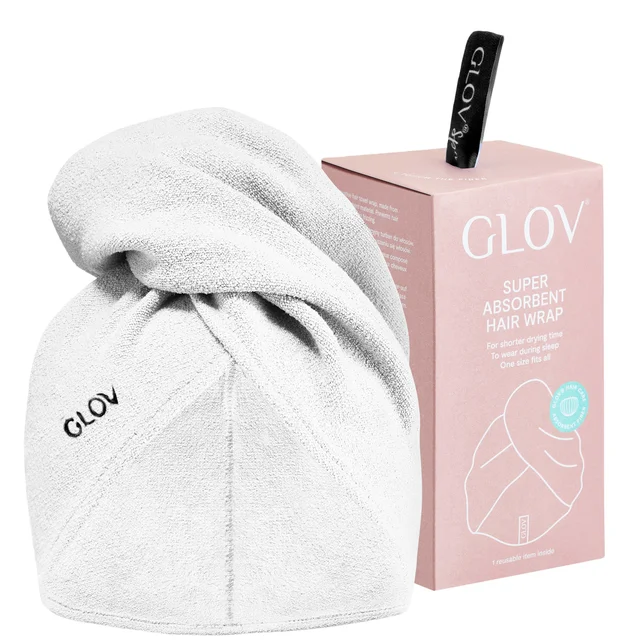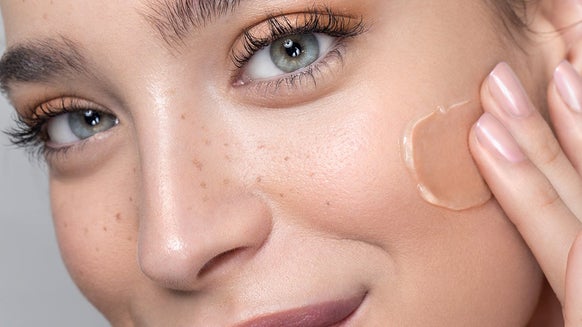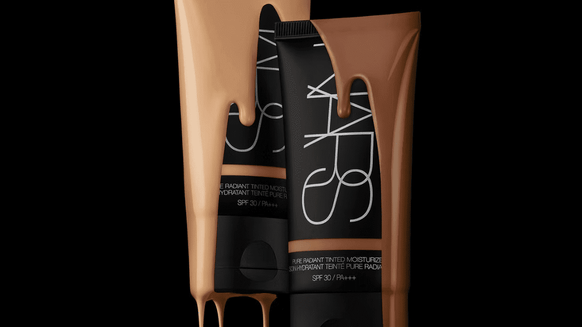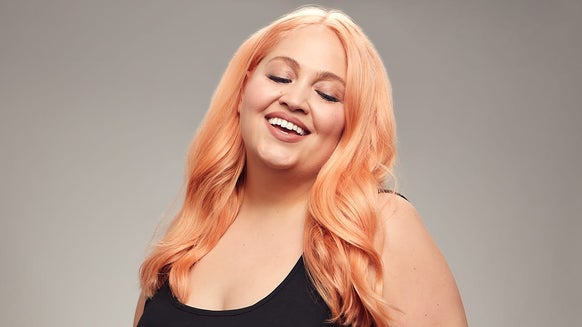Everything you need to know about the Curly Girl Method

There's a lot to know about the Curly Girl Method. This is more than just a hair routine, it’s a lifestyle that many curly girls follow religiously. It can help you fall in love with your natural hair, achieve more growth, and most importantly, get bigger and bouncier curls.
We’re going to give you the lowdown and answer on some of your key questions:
- How do you do the Curly Girl Method?
- Why do people use the Curly Girl Method?
- Can you use shampoo with the Curly Girl Method?
- Does the Curly Girl Method work for everyone?
Since the natural revolution, the curly community has grown more and more, unlocking new techniques and methods to care for natural hair and embrace natural texture.
Whatever your ethnicity, this method will do wonders for all wavy, curly and coily haired people. Even if you think your hair is frizzy rather than curly, you'll be surprised. As Lorraine Massey once said, ‘frizz is just a curl waiting to happen’.
Here, you can learn everything you need to know about the CGM, including how it works, the dos and don't, and which ingredients you should avoid.
Before you start your new journey, make sure you know what hair type and porosity you have. This way, you can choose products that will work best for you.
How do you do the Curly Girl Method?
The curly girl method comes down to four simple steps. Plus, a slightly longer-list of no-gos. The original Curly Girl Method was laid out by Lorraine Massey, co-founder of DevaCurl, in her book, ‘Curly Girl: The Handbook’. Although the method has since been modified in many ways, this book was the starting point. The guide provides advice on curly hair types, homemade hair care recipes and even nutrition - but it’s mostly known for its advice on ingredients.
The original CGM has a strict ‘no entry’ policy on…
- Sulphates
- Silicones
- Alcohols
- Mineral Oils
According to this method, you should also stay away from…
- Heat tools (e.g. straighteners and blow dryers), with the exception of a low heat diffuser
Brushes (hair should only be combed with fingers or a wide-tooth comb when wet) - Towels
Step 1: Cleanse with a sulphate-free shampoo
Sulphates strip hair of its natural moisture and should mostly be avoided. Commonly used in detergents, sulphates are just too harsh for our delicate curls. Squeaky clean is not a good thing, it means the shampoo has stripped every inch of moisture from your hair.
The only time you should use sulphates is when you’ve slipped up and accidentally applied silicone or mineral oil to your hair. These ingredients are very difficult to properly remove, and only sulphates can do the job. Otherwise, avoid them at all costs.
As many shampoos contain sulphates, check the label to make sure they’re sulphate-free. If you want to learn more about how to live a sulphate-free life, check out our top ten list.
When you apply shampoo, use your fingers (not your nails!) to massage the product in for at least 60 seconds. This helps to uplift build-up and properly cleanse your scalp.
How often can I shampoo?
According to the CGM, you should try to limit how often you shampoo your hair. If you have wavy hair, try and stretch it to once or twice a week. Curly haired folk should aim to shampoo every 7-10 days, while coily haired people should cleanse as little as possible, co-washing instead.
However, you should always listen to your hair – if your scalp is itchy, give it a wash.
What is a co-wash?
Short for 'conditioner washing', co-washing is when you ditch the shampoo and only use conditioner. Simply wet your hair to rinse out any leftover product, then go straight in with your favourite conditioner and detangle. It's great if you need to refresh your curls between wash days, without using shampoo.
Step 2: Condition
Step 2A: Choosing the right conditioner
First, you need to pick a conditioner that is Curly Girl Approved. Most conditioners and styling products contain silicones and mineral oils - two ingredients which are banned by the CGM.
Silicones and Mineral Oil coat the strands, suffocating the hair and creating build-up. They can only be removed by strong sulphates (the first big no), which can cause damage.
Alcohols are also on the blacklist because they dry out hair, leaving your locks dull and brittle. Textured hair naturally needs more moisture than other hair types, so we've got to hold onto it for dear life.
Reading the ingredients list is the quickest way to check if a product is Curly Girl Approved. If you’re still unsure, simply copy & paste the full ingredients list into http://www.isitcg.com/. The website will tell you in an instant if any of the usual suspects are present. This is great research for new products, but it's also worth doing a background check on your Old Faithfuls.
Step 2B: Applying conditioner
Once you've fully washed out your shampoo, apply conditioner. If you have type 2 hair, opt for something lightweight. If you're type 3 or 4, go for a thick and creamy leave-in conditioner.
Once the hair is saturated with product, start detangling with your fingers or a wide-tooth comb. No brushes are allowed within the CGM. This may sound crazy at first, but trust me, it's better for your hair. Finger detangling is a much more delicate way to separate tangles, rather than dragging a brush through your curls. A wide-tooth comb is also acceptable - as long as it's used carefully.
For those with hair types 3 and 4, split the hair into four sections for detangling. It makes things much easier and ensures every strand is properly conditioned.
After detangling, type 2 should rinse out most, but not all, of the conditioner. This keeps your hair moisturised for step 3, without leaving it greasy. Types 3 and 4 are using leave-in, so don't bother rinsing.
Step 3: Style
Any styling products you use must also be free from silicones, alcohols and mineral oil. Again, keep an eye on the ingredients list.
For the CGM, gel is going to be your new best friend. But don't worry, I don't mean the old school stuff that leaves your hair rock hard and covered in white flakes, I mean gel that holds your curls in place while nourishing the follicle.
Comb the product through your sopping wet hair with your fingers. This may sound strange, but you should only detangle curly hair while it’s wet and saturated with product. You’re asking for trouble if you try to detangle curly hair when it’s dry. Not only will this be almost impossible, it'll be painful and damaging for the hair.
If you're from the wavy crew, scrunch the gel into your hair to encourage curl formation. If you're curly or coily, section your hair to make sure every strand is saturated with product. Curly and coily girls can also add a curl butter or cream to their styling mix. This will help your styles last longer and keep your spirals moisturised.
Step 4: Dry
Another thing you may have been doing wrong is using a towel. Hair is most prone to breakage when wet and towels are made from rough fibres – a recipe for disaster. Rubbing makes this even worse and can literally snap your strands.
Instead, opt for a microfibre towel, as they are made from a much softer material. Alternatively, use an old T-shirt. I know that sounds funny, but T-shirts are made from soft cotton material that can absorb moisture without damaging the hair.
Am I allowed to use heat?
As you could have expected, heat tools are also off the table. They create the unholy trinity of frizz, damage and breakage. It may look nice for one evening, but it really isn’t worth it if you have fragile hair. If you really can't resist, make sure you use a high-quality, Curly Girl friendly heat protectant.
What about diffusers?
If it's a cold day or you can't be bothered to wait for your hair to air dry, diffusers are allowed - just make sure it's on low heat. Specially designed for curly hair, diffusers spread the heat over larger areas to minimise direct contact. They're great for creating volume or mixing up your look.
Does the Curly Girl Method work for everyone?
Sadly, no. Your hair needs to have some kind of texture to form waves or curls. Those with hair types 2, 3 and 4 will see the benefits of this method. If you’re type 1, this method isn’t for you.
Even if you do have curly hair, this method won't work in the same way for everyone. Your hair type is very individual, some people have stronger hair that can benefit from sulphates, while some may find a brush works best. Try sticking to the CGM for at least 4 weeks before you change it up. Modify one thing at a time (e.g. add in a sulphate shampoo), to see which changes really work for you.
If you want to learn even more about your hair, check out our Curly & Wavy or Afro & Textured sections. There, you'll find a list of the best products for your specific hair type.

Our team of beauty experts cover everything from makeup to skincare, picking out the most effective products from the best brands and latest trends. Stay up to date on everything beauty with the LOOKFANTASTIC blog, and find all your essentials in one place.








